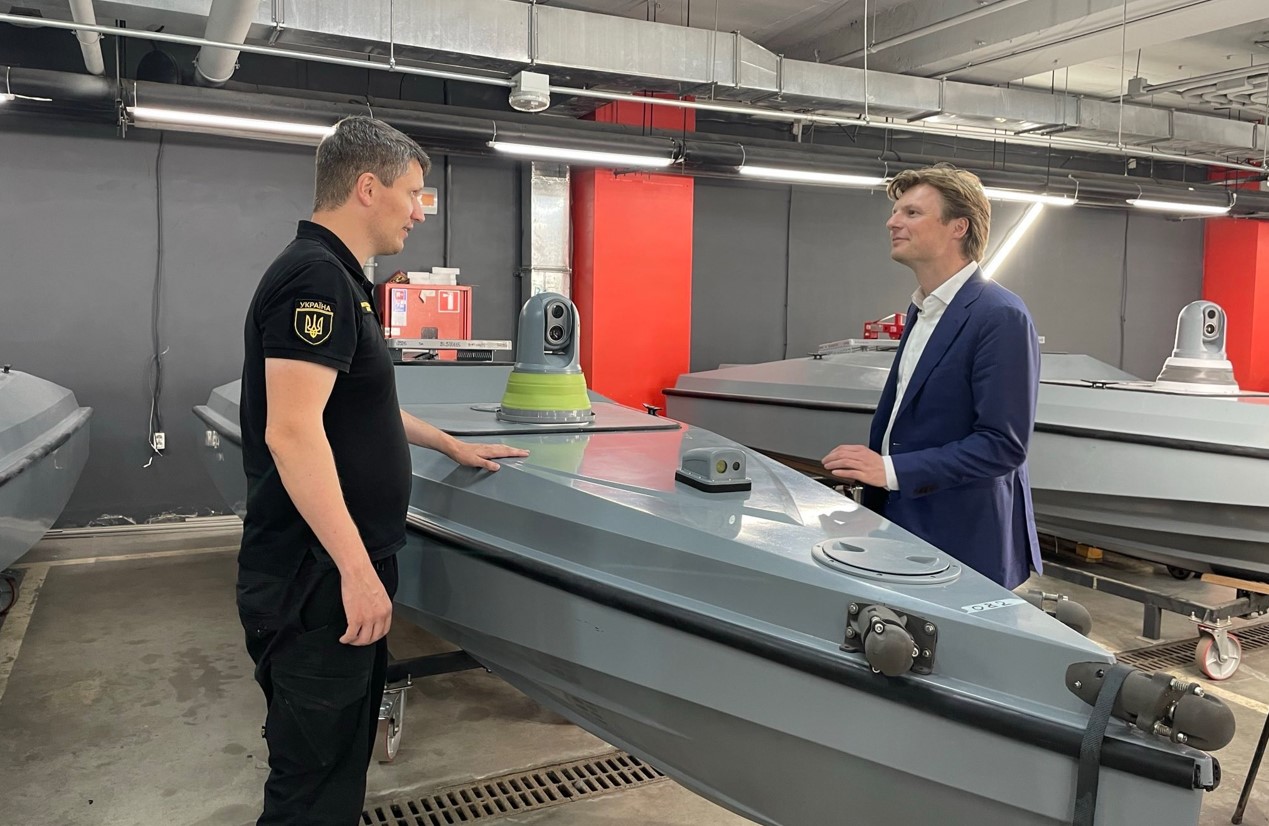Allies Allocate $1.5 Billion For Weapons Production by Ukrainian Defense Industry
27 January, 2025 Workshop for the production of armored hulls and chassis for the Bogdana self-propelled guns The national defense industry has received more than £1.5 billion from partner countries for the production of weapons for the Ukrainian Defense Forces. Minister of Strategic Industries Herman Smetanin announced this.
In 2024, as part of the ZBROYARI: Manufacturing Freedom project, the Ukrainian government has attracted more than £1.5 billion to the Ukrainian defense industry from foreign partners. The initiative was joined by 9 countries: Denmark, Canada, the Netherlands, Lithuania, the United Kingdom, Sweden, Norway, Iceland, the United States and the European Union. The states allocated either their own budget funds or interest on frozen Russian assets.
More than £500 million has already been spent on arms contracting through the implementation of the 'Danish model'. The previously announced Danish 2S22 Bohdana self-propelled howitzers were manufactured using the funds. In addition, the countries financed the production of long-range drones, anti-tank and anti-ship missiles.
 Ukrainian Bohdana self-propelled artillery system.
Ukrainian Bohdana self-propelled artillery system.
2024. Photo credits: Ministry of Defense of Denmark
ZBROYARI initiative
Active work on the "ZBROYARI: Manufacturing Freedom" project was launched at the end of last year. It immediately received a global aim of accumulating £10 billion in arms contracting from Ukrainian manufacturers by the end of the year.
At the end of last year, the Danish government was presented with the proposals to finance the production of Ukrainian products for the first time. The agreements resulted in a £170 million Danish order for Ukrainian arms manufacturers, which includes 18 Bohdana self-propelled howitzers. Canada became the second participant in the initiative.
The Ministry of Strategic Industries told Ekonomichna Pravda that it all had started with a visit to Ukraine by Canadian Defense Minister Bill Blair. At that time, the country allocated £95 million to purchase 800 Canadian SkyRanger R70 drones as part of the Drone Coalition. "We met him (Bill Blair), thanked him for the drones, but said we wanted to show him something.
We made a comparison chart with the cost and characteristics of the SkyRanger R70 and its Ukrainian counterparts, which are several times cheaper. They offered to buy a test batch of Ukrainian drones," the source at the Ministry of Strategic Industries shared. Canada was interested in the proposal, and its government agreed to allocate £2.1 million for Ukrainian drones.
The Ministry of Strategic Industries notes that agreements with Canada and other countries are not final, and Ukraine will do everything to expand funding programs. Later, Ukrainian officials managed to involve the representatives of the Netherlands in the initiative, successfully presenting the capabilities of defense companies to them. As a result, the country agreed to allocate EUR17.5 million for the purchase of Ukrainian maritime drones and allocated EUR20 million for FPV drones, some of which can be used by domestic enterprises.
 Dutch Defence Minister Ruben Brekelmans and a Magura V5 naval drone
Dutch Defence Minister Ruben Brekelmans and a Magura V5 naval drone
The real challenge for Ukraine was to get Germany or the UK involved.
The main problem was competition with local defense giants already heavily involved in arms supplies. However, Ukraine has found a way out of the situation. This year, Ukroboronprom created a joint venture with the German concern Rheinmetall, which will produce the latest Lynx infantry fighting vehicles in Ukraine.
The Ministry of Defence does not have the money to purchase them, but according to Kamyshin, they will be produced at German expense.
 Production of the KF41 Lynx infantry fighting vehicle at a German factory in Lower Saxony. Photo credits: Rheinmetall
Production of the KF41 Lynx infantry fighting vehicle at a German factory in Lower Saxony. Photo credits: Rheinmetall
It was possible to agree on money for weapons with the British government.
So far, it is about financing the repair of L119 howitzers at Ukrainian facilities.
The agreement was facilitated by the British company BAE Systems, which is the developer of these artillery systems.
However, the primary source of funding at this stage of the initiative's development should be the European Union, which will allocate EUR400 million for the project. According to the Ministry of Strategic Industries Head, this money should be allocated from the EUR1.4 billion in profits from the frozen Russian assets.